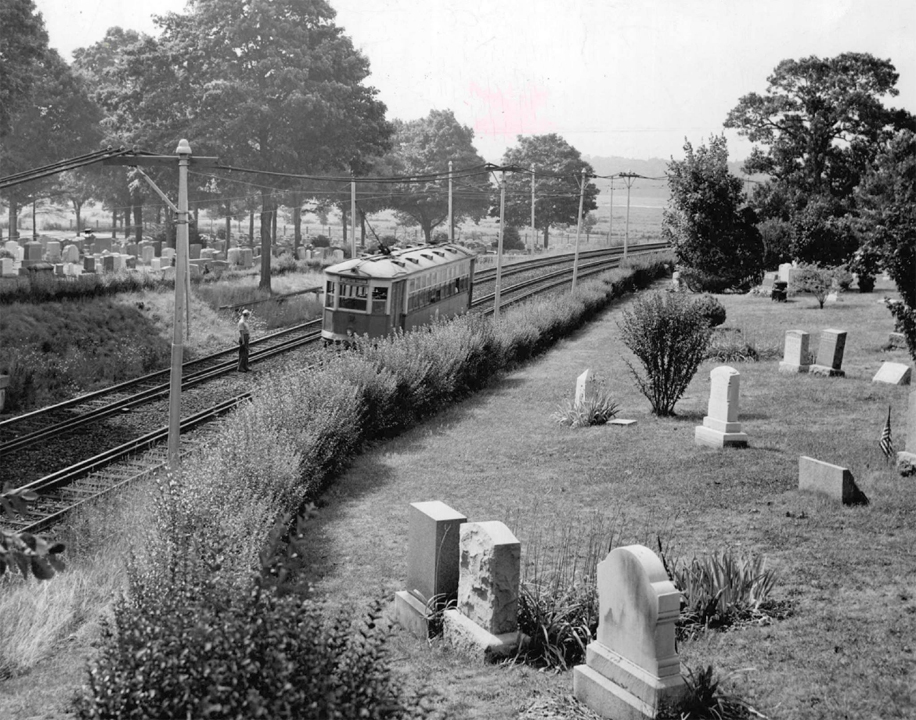Dorchester Illustration no. 2474 Which came first: the trolley or the cemetery?
The photo, showing the trolley line between the parts of the Cedar Gove Cemetery, was taken by Herbert Stier in 1949.
Which came first, the trolley or the cemetery? The short answer is the cemetery.
The first railroad line through Dorchester, which was in operation by 1845, was the Old Colony along the eastern edge of the town, a right of way now used by the T to Quincy and beyond. The following year the Dorchester and Milton Branch Railroad was incorporated to run from the Neponset station of the Old Colony to Mattapan Square.
The concept of a cemetery near the Neponset was approved in 1868. The name of Cedar Grove Cemetery was officially adopted in January, 1869, and the first cemetery lot was sold in May, 1870.
In 1872 the Old Colony and Newport Railway Corporation built the Shawmut Branch Railroad, a steam railroad, as a connection between the Dorchester and Milton Branch Railroad near the Neponset River. This line is the branch that leads to Fields Corner, Shawmut and Ashmont, then on to join the Dorchester and Milton Branch railroad at the southern edge of the Cedar Grove Cemetery and leads on to Mattapan Square. The Act to Incorporate the Shawmut Railroad Company was passed by the Massachusetts legislature June 22, 1870. The act gave Edmund P. Tileston (who had paper factories at Mattapan), Henry L. Pierce (who owned the Baker Chocolate Co.) and Franklin King (a major property owner in Dorchester) the right to locate, construct, maintain and operate a railroad with one or more tracks, commencing at some convenient point on the Neponset River … crossing in its course the Milton Branch Railroad and the Cedar Grove Cemetery …
After the electrification of the T in 1926, the part of the Dorchester and Milton Branch Railroad that traveled eastward to Neponset experienced less traffic and later fell into disuse. Its route was approximately that of the current bike-path.
check out www.dorcheteratheneum.org and www.dorchesteratheneum2.org

